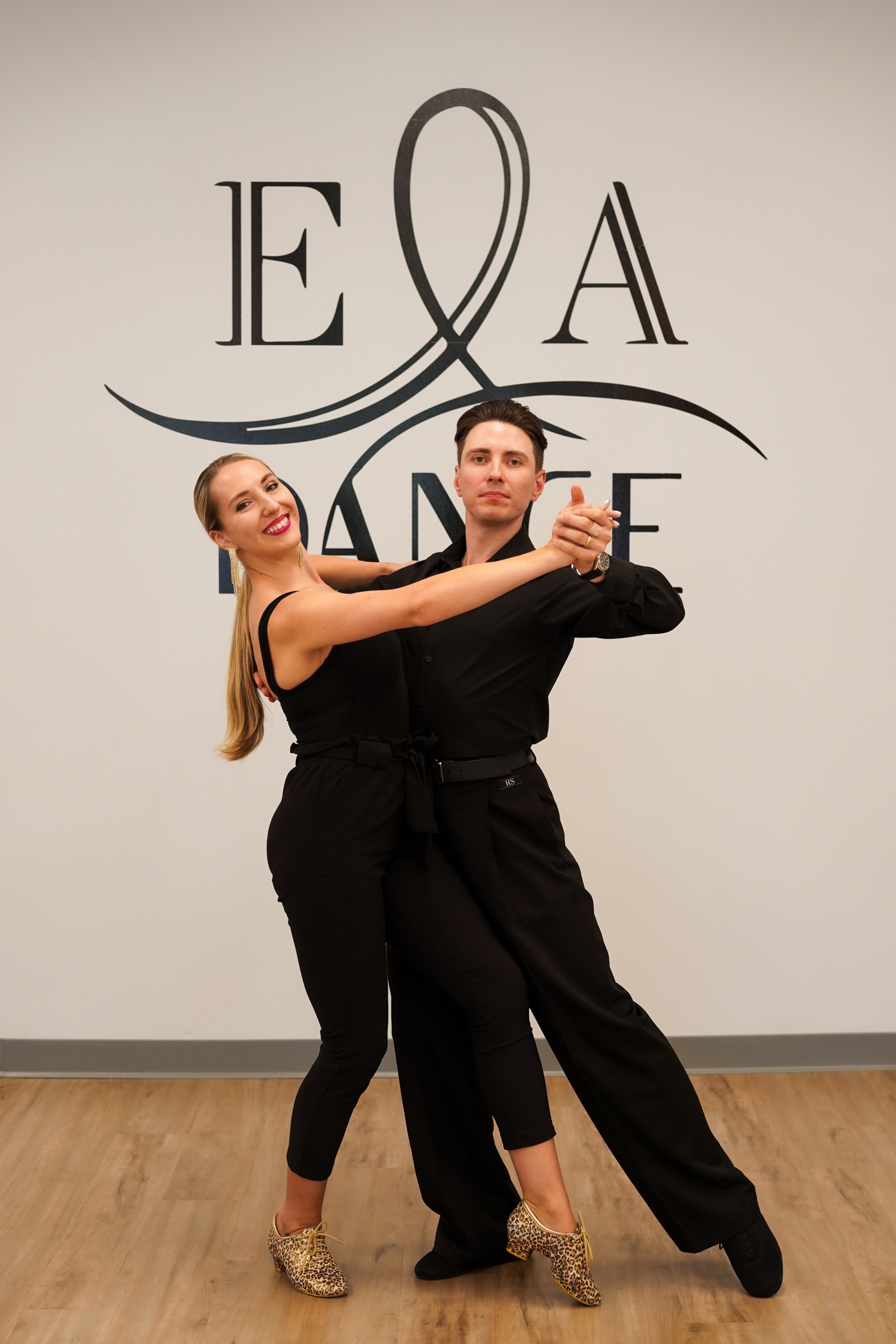Viennese Waltz Dance Lessons Near Bay Hill, Florida
Looking to get private dance lessons near Bay Hill, Florida? We've got you covered! We are conveniently located in Ocoee and ready to help you on your dance journey!

Viennese Waltz
The Viennese Waltz is a classic ballroom dance known for its elegance, grace, and flowing movements. Here are some key points about the Viennese Waltz:
1. **Origin**: The Viennese Waltz originated in Austria in the late 18th century and gained popularity in Vienna during the early 19th century. It evolved from the Austrian folk dance known as the Ländler.
2. **Music and Tempo**: Viennese Waltz is danced to music with a fast tempo, typically around 58-60 beats per minute. The music is in 3/4 time signature, with a strong emphasis on the first beat of each measure.
3. **Rotational Movement**: Viennese Waltz is characterized by its continuous rotational movement around the dance floor. Partners move in a closed dance frame, rotating clockwise or counterclockwise as they perform figures and patterns.
4. **Footwork**: The basic steps of the Viennese Waltz include a combination of natural and reverse turns, fleckerls (or spins), and change steps. Dancers maintain a smooth and gliding motion, with quick changes of direction and graceful transitions between steps.
5. **Frame and Posture**: Proper frame and posture are essential in Viennese Waltz, with dancers maintaining an upright stance, relaxed arms, and a strong connection through their upper bodies. This allows for clear communication and fluid movement between partners.
6. **Elegance and Romanticism**: Viennese Waltz is celebrated for its elegance, romanticism, and sophistication. It evokes a sense of grace and refinement, making it a popular choice for formal events, weddings, and ballroom competitions.
7. **Choreography and Technique**: Viennese Waltz choreography often includes figures such as natural and reverse turns, hesitation steps, and fleckerls, arranged in sequences to create a captivating performance. Mastery of technique, timing, and musical interpretation is essential for dancers to execute the dance with precision and style.
Overall, the Viennese Waltz is a timeless and enchanting dance style that continues to captivate dancers and audiences with its beauty and grace. Its rich history and elegant movements make it a cherished tradition in the world of ballroom dancing.